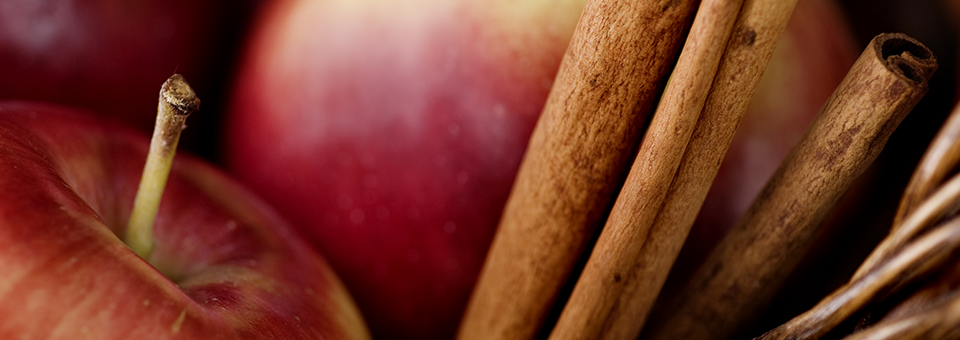
Traditional doctors have hundreds of drugs they use to treat diabetes.
The problem is… Big Pharma’s meds have failed to prevent or treat today’s worldwide diabetes epidemic.
And it’s only going to get worse.
Plus, their expensive drugs come with a long list of nasty side effects, including weight gain, dizziness, cardiovascular reactions, flu-like symptoms, fatigue, muscle pain, diarrhea and anemia.
I help my patients balance their blood sugar with natural alternatives, including cinnamon.
It’s one spice that not only smells great, but is amazing for your health — especially if you suffer from diabetes or high blood sugar.
I add cinnamon to my cooking and coffee, and sprinkle it over my yogurt.
But there’s more to this ancient spice than just great flavor.
A laboratory test conducted by the U.S. Department of Agriculture (USDA) showed MHCP increased blood sugar metabolism by roughly 2,000%.1
Cinnamon can help you balance your blood sugar. And that’s more important today than ever… Because today’s modern diet causes your pancreas to produce too much insulin. When too much insulin overwhelms the insulin receptors in your cells, it makes them insulin-resistant.
This leads to high glucose levels, which in turn leads to prediabetes.
And ultimately, type 2 diabetes.
Exciting new research shows cinnamon significantly increases insulin production and balances blood sugar.2 Researchers discovered that cinnamon actually increases your glucose metabolism. It contains a compound called methyl hydroxy chalcone polymer, or MHCP for short, that works with insulin to help process glucose.
In a second USDA study, patients took a teaspoon of cinnamon a day. Within weeks, they saw their blood sugar levels drop 20% on average compared to those who took a placebo.3
And in a study published in the American Journal of Clinical Nutrition, researchers fed people a cup of rice pudding either with or without cinnamon. They found that the cinnamon slowed the rate the stomach emptied by up to 37%. That significantly slowed the rise in blood sugar levels. It also increased levels of a peptide that helps prevent overeating which can lead to spikes in blood sugar.4
Cinnamon is also a powerful antioxidant. It reduces inflammation and promotes heart health.5 And it can help you lose weight. Studies show that cinnamon actually mimics insulin to clear glucose from your blood so your body stops storing excess sugar as fat.6
Other research shows that cinnamon helps:
- Reduce blood pressure
- Relieve arthritis
- Support healthy blood clotting
- Boost memory
- Improve digestion
I recommend using a teaspoon of cinnamon powder a day. But make sure you get the right kind of cinnamon.
The 3 Best Ways to Lower Your Blood Sugar Naturally
- Eliminate diabetes with true cinnamon (Cinnamomum zeylanicum) or “Ceylon cinnamon.” Because not just any cinnamon will reduce your risk of diabetes. The cinnamon you buy in the grocery store isn’t “true” cinnamon at all. It’s a similar spice known as cassia.
Ceylon cinnamon comes from Sri Lanka, India, Madagascar, Brazil and the Caribbean. It’s more expensive and harder to find. But it’s what I recommend for my patients. You see, cassia has higher levels of coumarin, a natural blood thinner. In fact, cassia has about 250 times more coumarin than Ceylon cinnamon does. Too much coumarin can cause liver toxicity and cancer.
I’ve recommended that my diabetic patients take a cinnamon supplement for years. The research shows that 500 mg a day regulates blood sugar levels even in people with insulin resistance.7
- Try the Jamaican blood sugar buster. My friend Ivey, a seventh-generation traditional healer in Jamaica, introduced me to cerasee many years ago. Since then, I’ve dug into the research on this tropical vine. More than 100 scientific studies prove cerasee’s value in treating blood sugar problems. For example, a large study found that cerasee plays a key role in helping to balance insulin in your body.8 And another study showed it had positive effects on the serum glucose levels of those taking it, following both fasting and eating.9
- Then try the “sugar destroyer.” For more than 2,000 years, people in India used Gymnema sylvestre to control blood sugar. The herb is also called “gurmar,” which means “destroyer of sugar” in Hindi. In one study, 22 patients struggling to maintain normal blood sugar levels took Gymnema sylvestre daily for 18 to 20 months.10 By the end of the study, 100% of the patients showed excellent blood sugar levels!
To Your Good Health,

Al Sears, MD, CNS
References
1. USDA. “Insulin imitators: Polyphenols found in cinnamon mimic job of hormone.” agresearchmag.ars.usda.gov/2004/apr/cinnam. Accessed on November 26, 2018.
2. Kim SH and Choung SY. “Antihyperglycemic and antihyperlipidemic action of Cinnamomi Cassiae (Cinnamon bark) extract in C57BL/Ks db/db mice.” Arch Pharm Res. 2010;33(2):325-333.
3. Gray A. “Nutritional recommendations for individuals with diabetes.” Endotext. May 31, 2015.
4. Hlebowicz J, et al. “Effects of 1 and 3 g cinnamon on gastric emptying, satiety and postprandial blood glucose, insulin, glucose-dependent insulinotropic polypeptide, glucagon-like peptide 1 and ghrelin concentrations in healthy subjects.” Am J Clin Nutr. 2009;89(3):815-821.
5. Broadhurst CL, et al. “Insulin-like biological activity of culinary and medicinal plant aqueous extracts in vitro.” J Agric Food Chem. 2000;48(3):849-852.
5. Qin B, et al. “Cinnamon extract prevents the insulin resistance induced by a high-fructose diet.” Horm Metab Res. 2004;36(2):119-125.
6. Stoecker BJ, et al. “Cinnamon extract lowers blood glucose in hyperglycemic subjects.” FASEB J. 2010.
7. Leatherdale BA, et al. “Improvement in glucose tolerance due to Momordica charantia (karela).” Br Med J (Clin Res Ed). 1981;282(6279):1823-1824.
8. Welihinda J, et al. “Effect of Momordica charantia on the glucose tolerance in maturity onset diabetes.” J Ethnopharmacol. 1986;17(3):277-282.
9. Ahmad N, et al. “Effect of Momordica charantia (Karolla) extracts on fasting and postprandial serum glucose levels in NIDDM patients.” Bangladesh Med Res Counc Bull. 1999;25(1):11-13.
10. Baskaran K, et al. “Antidiabetic effect of a leaf extract from Gymnema sylvestre in non-insulin-dependent diabetes mellitus patients.” J Ethnopharmacol. 1990;30(3):295-300.








